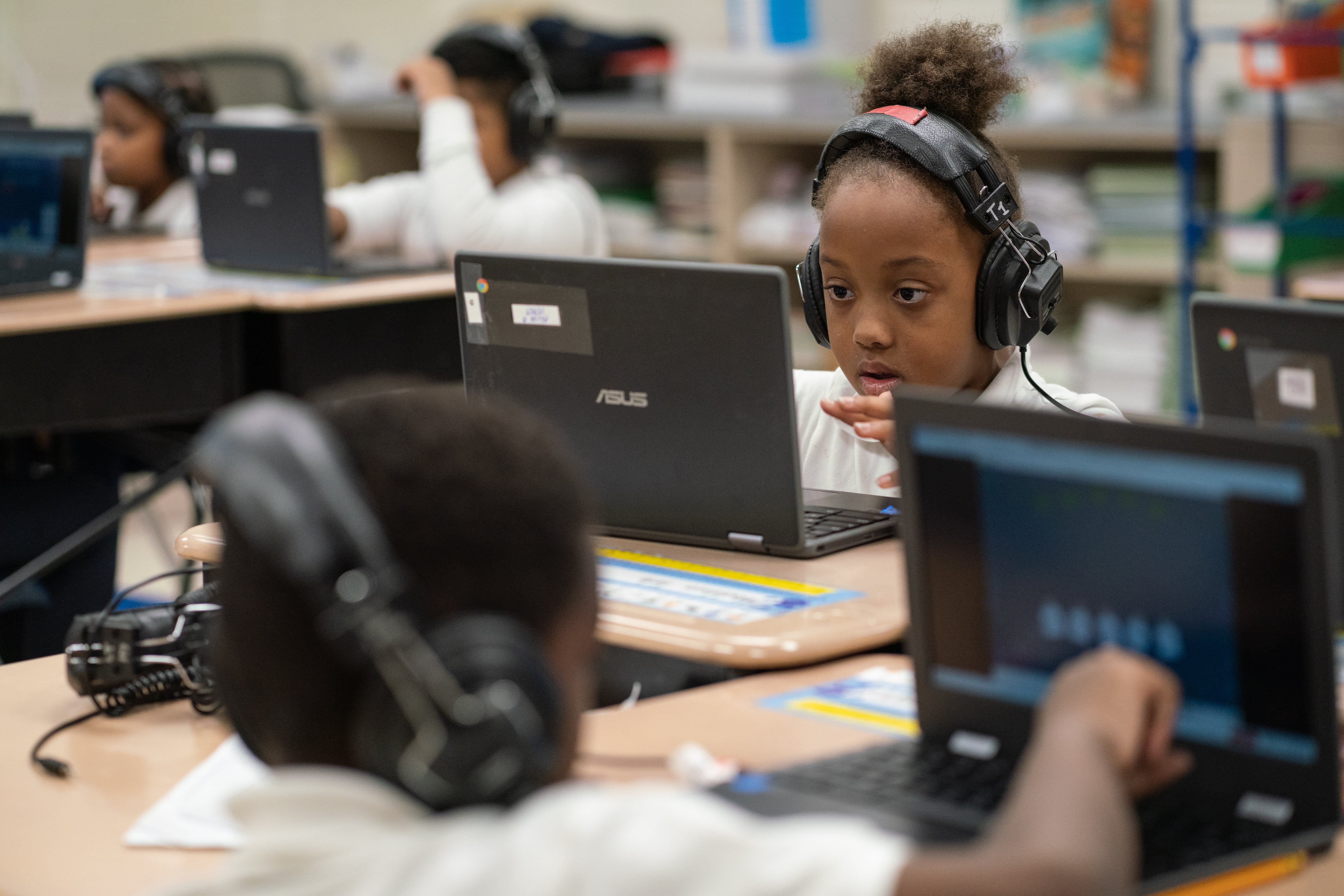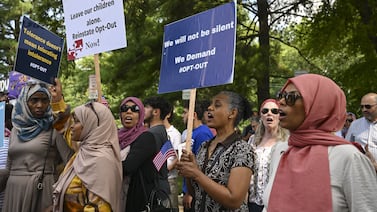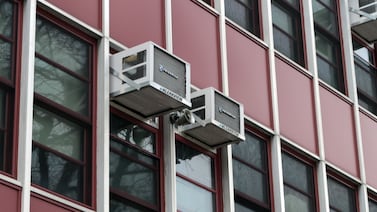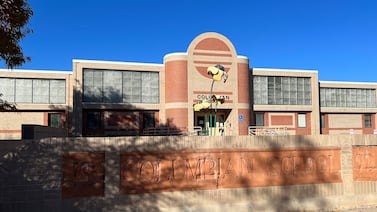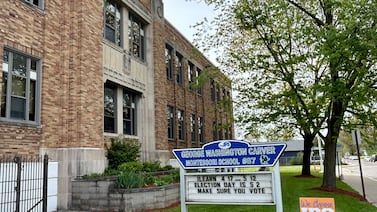Sign up for Chalkbeat Chicago’s free daily newsletter to keep up with the latest education news.
The Illinois House passed a $53.1 billion budget with increases for early childhood education, K-12 public schools, and the state’s literacy plan early Wednesday morning by a vote of 65-45. The bill heads to Gov. J.B. Pritzker’s desk for final approval.
“For the sixth consecutive year, I introduced and the legislature passed a balanced budget that invests in our future while putting money back in the hands of hard-working Illinoisans,” Pritzker said at a press conference on Wednesday.
The state’s General Assembly also passed a state child tax credit, which would make Illinois one of more than a dozen states to approve such legislation in the wake of the COVID pandemic, when the federal government temporarily expanded the benefit. Low-income Illinois families with children under the age of 12 and those who qualify for the state’s Earned Income Tax Credit would be eligible to receive the credit in 2025.
This version of the state’s child tax credit expands on what Pritzker proposed in February when he pitched a tax credit for families with young children who are 3 or younger.
Starting in July 2021, families across the country received up to $300 for children 17 or younger as part of the Biden Administration’s American Rescue Plan. The program, which lapsed in December 2021, was credited with reducing child poverty and hunger. States including Colorado, California, and New York have since created their own child tax credit.
“The truth is that we all think that education should be better funded,” said Pritzker, when asked about Chicago Mayor Brandon Johnson, who made a trip to Springfield to ask for more education funding for the city’s schools.
But, the governor said, the need expands beyond Chicago.
“The city of Chicago is 20% of the population of the state,” he said at the Wednesday press conference. “So we have a lot of other kids across the state going to school. We need to fund their schools better too.”
Here are more highlights on education funding in the state’s fiscal year 2025 budget.
New state Early Childhood Department gets a boost
The budget includes about $14 million to start a new state Early Childhood Department to help streamline early childhood education and child care programs. Separate legislation to create the department still needs a signature from Pritzker.
The new department, which was approved by lawmakers during the session, will bring early childhood education programs from the Illinois State Board of Education, the state’s Department of Human Services, and Department of Child and Family Services under one roof by July 1, 2026. The governor’s budget proposal had asked for $13 million to launch the department.
The Illinois State Board of Education received an increase of $75 million for its Early Childhood Block Grant, bringing total funding for the program to almost $750 million. Pritzker hopes this will create 5,000 new seats for preschool students this year. Earlier this year, Pritzker and the state board added 5,800 preschool seats during the first year of his Smart Start Initiative — a plan to create 20,000 preschool seats for 3- and 4- years old and provide more funding for early childhood education.
Early childhood programs under the Department of Human Services will see an increase as well. The state’s home visiting program, a program that supports pregnant women and families with children under 5, received an additional $5 million. The department’s Child Care Assistance Programs, which provides financial assistance for low-income families, received an additional $36.5 million in state funding.
The state’s Early intervention program received an additional $6 million to support children 3 and younger with disabilities. Early childhood advocates were upset when this increase was proposed by Pritzker in February because advocates say they have seen an uptick in the number of children waitlisted for services and experiencing service delays. They said they have also seen a lack of incentives for early intervention providers to stay in the programs or recruit more providers.
Advocates went to Springfield in April to ask the state to invest $40 million more, just as the year before. The state said last year’s increase and this year’s increase is enough to ensure that children continue to receive early intervention services.
K-12 education gets $350 million more
Illinois’ public schools districts will receive $8.6 billion in state funding next year – $350 million more than last year. That’s the minimum annual increase lawmakers agreed to in 2017 when the state created a new formula to change how K-12 schools are funded. The initial goal was to get all schools to an adequate funding level by 2027.
Over time, districts have received almost $2 billion more in funding from the state. But education advocates and funding experts say districts won’t reach adequate funding until at least 2030, unless the annual increases jump to $550 million or more. In a recent report, the Center for Budget and Tax Accountability noted a funding gap of about $2.3 billion.
Advance Illinois, a policy and advocacy organization that focuses on education, was one of the groups that supported a $550 million increase for K-12 schools.
“This governor has demonstrated that education is a priority,” said Robin Steans, the organization’s president. “This is a tough year. We appreciate the new and increased investments they’ve made, even as we recognize we’re disappointed that there is some important work left to be done.”
The 2025 budget includes $3 million for the implementation of the state’s new literacy plan, which was finalized earlier this year by the Illinois State Board of Education.
Noticeably missing from the budget is funding to support local school districts that have seen an increase in the number of students who recently migrated to the United States.
In the spring of 2022, Illinois schools started to see a rapid increase in enrollment as families were bused from the southern border in Texas to cities like Chicago. Chicago Public Schools and suburban school districts reported enrolling a large number of students from Venezuela. With more English learners enrolling in schools, the need for bilingual staff and educators increased. The overall needs of schools also grew exponentially as they grappled with limited resources to support newly arrived students.
Some school districts have asked for more funding because the state’s evidence-based funding formula does not capture students who enroll during the school year.
In addition, the State Board of Education and local school districts use different methods of counting the number of newcomer students enrolled in schools. To help support schools and the needs of newcomers, the state board asked the General Assembly for $35 million.
Rep. Fred Crespo, a Democrat representing suburbs northwest of Chicago that have seen an influx of migrant families, filed a bill initially asking for $35 million, but with a push from education advocates and local school district leaders, he amended it to $188 million. However, it did not make it to the final budget.
Higher education sees minor increases
The Illinois Monetary Award Program, also known as MAP, a scholarship program for college-bound students from low-income families, received an additional $10 million, increasing the entire fund to $711 million.
Illinois higher education advocates, including The Partnership for College Completion, an advocacy organization focused on higher education, have criticized the governor for not proposing more funding for MAP.
Christian Perry, director of policy and advocacy at The Partnership for College Completion, said in a statement to Chalkbeat, that this year’s budget is not enough to support the needs of college-bound students in the state.
“The increase in MAP does not keep up with inflation and comes at a time when students are facing issues with the new FAFSA, making college-going alarmingly uncertain for low-income students,” said Perry.
In addition, the Illinois Student Assistance Commission’s Minority Teachers of Illinois Scholarship, which supports students of color and bilingual students who want to become teachers receive a scholarship, did not get a funding increase. The program will continue to get $8 million, the same amount it received in last year’s budget.
Samantha Smylie is the state education reporter for Chalkbeat Chicago, covering school districts across the state, legislation, special education, and the state board of education. Contact Samantha at ssmylie@chalkbeat.org.

